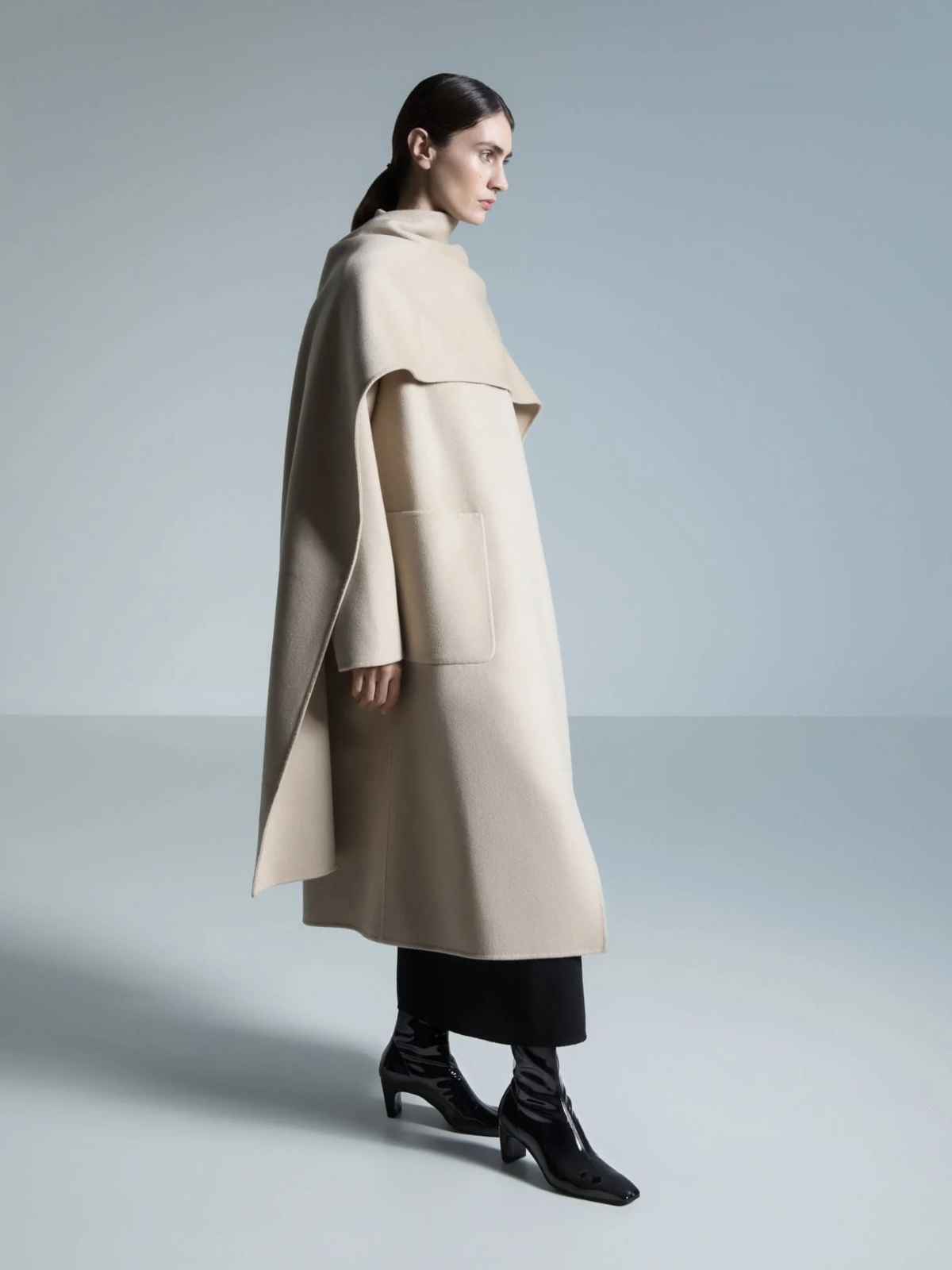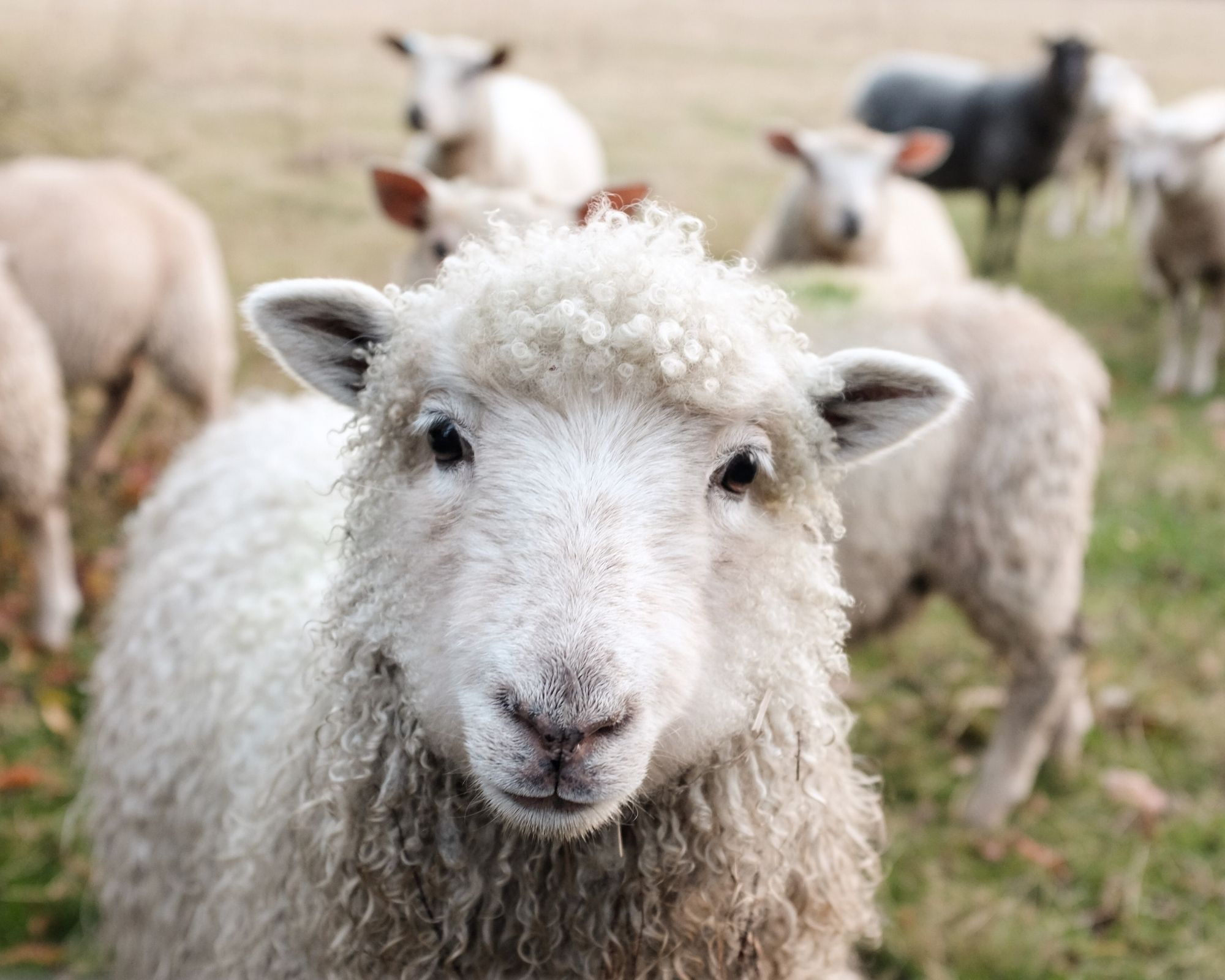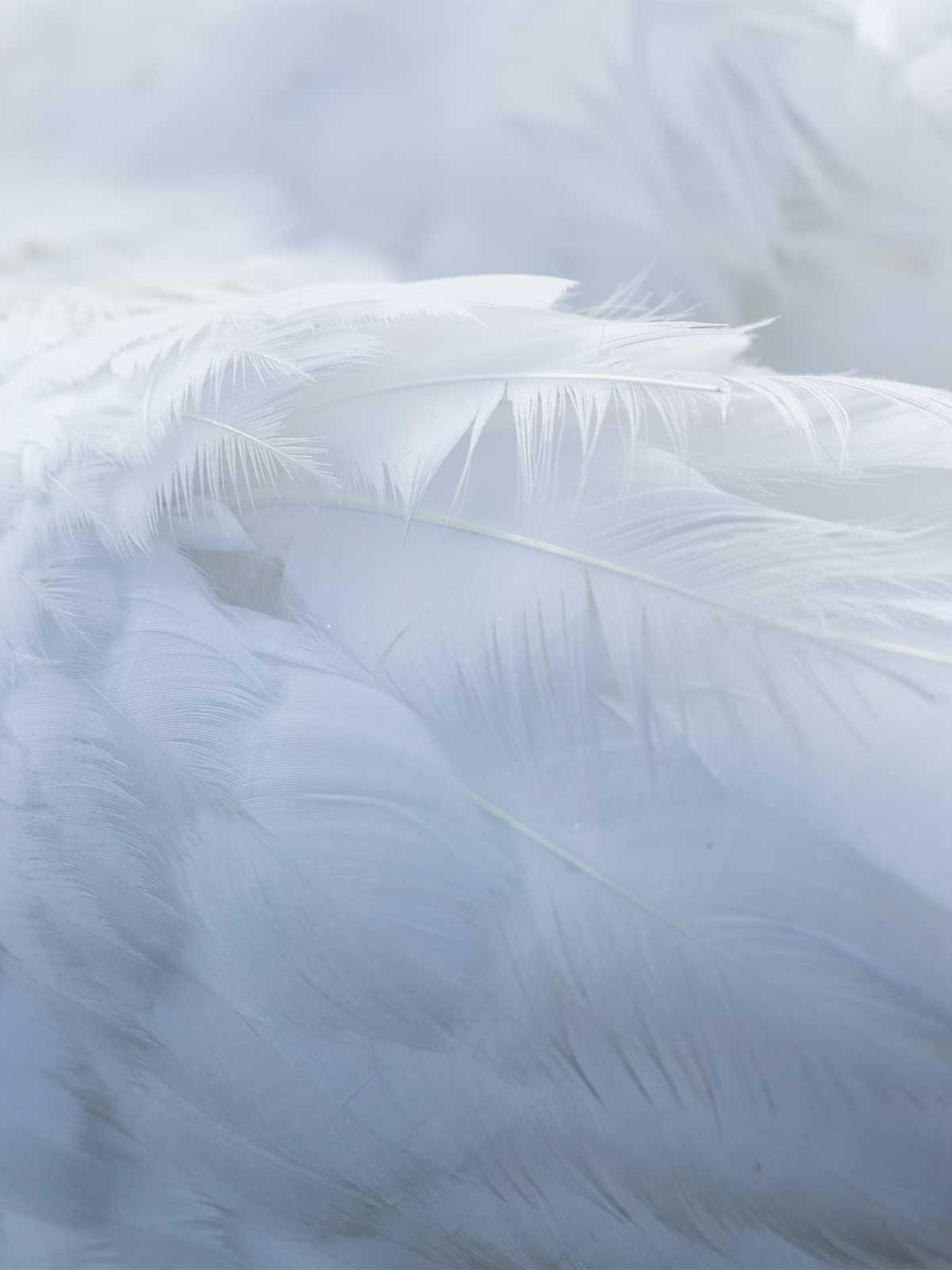Wool is a go-to fabric for warm and comfortable clothes. But it’s not as simple as shearing happy sheep—the reality is a complex supply chain that presents a host of animal welfare and environmental concerns. So, how sustainable and ethical is wool?
A woolly topic
The wool industry has a fairly wholesome image, which we take comfort in, too, as we picture well cared for sheep, roaming rolling hills. We imagine they’re rounded up every so often for a haircut which, if done with care, is an essential part of the life of a sheep. It seems as though the wool industry is mutually beneficial: sheep are cared for, we get warm woolly clothes. Win-win, right?
Unfortunately, the reality is far more complex. More and more investigations of the wool industry have found this picturesque ideal far from the truth. A few years ago, ethical outdoor clothing company Patagonia discovered animal cruelty practices in what it believed were ethical farms. And the world has been shocked by countless undercover exposés revealing painful mulesing and tail docking, two “surgical” practices performed with tools like knives, often with no pain relief.
But are these practices all we need to avoid for wool to be ethical? And how does wool production impact the world around us?
Why do we wear wool?
- Wool is breathable and a natural insulator
- Wool has an ability—similar to Tencel—to react to changes in the body’s temperature, meaning it keeps you cool in summer and warm in winter
- Wool is usually biodegradable. It decomposes readily, much like cotton and other plant-based fibres. That means once a woollen garment is worn out, you can bury it in the ground, and it will eventually compost. As long as it’s not superwash wool, which is coated in plastic.
But wool comes with a host of environmental costs and ethical issues—let’s take a look.
Impact on animals
Sheep have been domesticated for an extended part of human history but didn’t start as they are now. Humans have selectively bred sheep to maximise the amount of wool they carry. As a result, sheep risk death from heat exhaustion if not shorn. The sheep’s believed original ancestor, mouflon, could naturally shed its winter coat. The sheep we know today only continue to exist because we cyclically breed and slaughter them for our consumption of meat, wool, and sheepskins. We could see a future without sheep farming if we opted for plant-based materials instead and if lab-grown materials (and proteins) became a viable alternative.
In Australia, one of the world’s largest wool producers, it is widely believed that there are comprehensive animal welfare laws and standards, yet mulesing, which causes suffering, remains legal. Sheep and other farmed animals are sentient creatures like pets and have an equal capacity to feel pain. There is also ample evidence to prove sheep are more intelligent than popular culture portrays. For instance, did you know sheep can remember as many as 50 sheep faces in addition to familiar human faces?
Some people consider alpaca wool a kind alternative to sheep’s wool, as it is often marketed as small-scale and sustainable in the industry. But an investigation into the leading production country of alpaca wool, Peru, has shown the opposite to be true. Following the release of footage showing alpacas suffering as they are tied down for shearing, even UNIQLO has banned the fibre. While these findings are always shocking and upsetting, it’s powerful to know that people raising their voices against poor treatment can foster change, even in big brands.
Painful standard practices
Current laws allow for standard practices such as castration and tail docking, all without pain relief. And while mulesing has been made illegal in Europe, the UK and New Zealand, it remains a common practice in Australia.
Both tail docking and mulesing are practised to reduce the risk of flystrike. Flystrike happens when blowfly eggs laid on the skin hatch, and the larvae feed on the sheep’s tissue. It can cause infection and even death. Mulesing involves cutting skin from the buttock region with a knife, and tail docking is exactly what it sounds like—cutting or otherwise severing sheep’s tails. These painful practices are recommended to be performed on lambs only a few weeks old.
Fortunately, flystrike can be avoided without mulesing or tail docking, thanks to regular surveillance, crutching (shearing around the buttocks of a sheep), and other interventions. We see this happen at rescue animal sanctuaries. However, large flock sizes are often more profitable, with the average Australian flock containing 2,700 sheep and worldwide flock sizes generally being large. It is near impossible to ensure that such a large number of sheep receive this level of care and attention in the industry.
The good news? Numerous brands are pledging to use mulesing-free wool or going wool-free altogether in response to the painful practice. This is a clear indication that animal rights are being more considered. Learn more about Four Paws’ #woolwithabutt campaign and add your signature to support mulesing-free wool. However, mulesing is only one form of mutilation performed on sheep, and we’d love to see the others be considered, too.
Wool and meat
The wool industry is often considered different from or “kinder” than the leather industry because skin comes from a dead animal, whereas wool may not. However, the wool and meat industries are intrinsically linked, as animals used for their wool are usually slaughtered for their flesh once they stop producing quality wool. This is the case for sheep and alpaca wool production.
Three-quarters of the sheep in Australia are merino—known as the “wool” breed—with most others being crossbreeds. Sheep are considered “dual purpose” by the industry, and even merinos are used for both meat and wool.
Sheep who are no longer producing wool of a financially viable quality for the industry are killed. Generally, this is because they reach 5 or 6 years old, and their wool degrades just like our hair does as we age. These sheep, who can naturally live up to twelve years old, are considered “cast for age” and sent to slaughter, often through the live export industry. The conditions on live export ships are horrific, and many animals die before they arrive at their slaughter destination due to stress, starvation, and overheating. Thankfully, work is underway to make this practice illegal in Australia by 2028, which simply couldn’t come sooner.
Winter lambing
If we rewind to the beginning of a sheep’s life, there’s even more to uncover. Lambs in the wool and meat industries are generally bred to be born in the winter season. This is a cost-effective decision for the industry, as it means the lambs have green grass to fatten up on in spring, reducing the need for costly supplementary feed.
It’s been reported that fifteen million lambs die in the first 48 hours of their lives each year due to exposure to the cold, starvation, and neglect. This number is in part so high because the industry has selectively bred sheep for generations to have higher rates of twins and triplets. Twins and triplets are more likely to be smaller, weaker, and unable to withstand the harsh conditions they are born into.
Similarly, it is difficult for mother ewes to look after more lambs—especially triplets, as they only have two teats to feed their lambs from—and they are more prone to birthing complications and death. Farmers are encouraged by the industry to cull ewes who have been unable to keep their lambs alive or have reproductive problems, as they are considered less profitable.
Some organisations take in orphaned lambs who are found or handed over from farmers who don’t want to see them die, like Lamb Care Australia. It’s comforting to know such missions exist while the broader issue continues to be addressed.
All of this suffering is avoidable as there are plenty of similar materials that aren’t made from animals. A great thermo-regulating alternative to wool is Tencel, and you can find more fabric recommendations at the end of the article.
Impact on the planet
Other than it being unnatural for our Earth to have so many sheep on it—we breed and kill a staggering 500 million sheep annually worldwide—wool is a natural fibre, and it will biodegrade. Biodegradable materials are, of course, far better for the environment when considering post-consumer waste than synthetics like nylon, polyester, and acrylic, as these are forms of plastic. Like any other plastic, these fabrics take years to break down if they are discarded. Not to mention the pesky microfibres they shed in washing machines that end up in waterways.
But biodegradability is not all there is to the sustainability considerations of a fabric. Even when comparing Australian wool with Australian-grown cotton, Collective Fashion Justice’s CIRCUMFAUNA initiative found that wool has a very high impact, with the production of a wool knit jumper emitting 27 times more greenhouse gas emissions than a cotton one.
As we continue to compare Australian grown fibres—though cotton is not faultless—we also see that to produce one bale of wool, a whopping 367 times more land must be kept cleared than for a bale of cotton. In fact, animal farming generally is the world’s largest user of land resources. Pasture and arable land used to grow feed for farmed animals represent almost 80% of total agricultural land, and 26% of the earth’s ice-free surface is used for grazing. When we clear land, we cause a loss of biodiversity, wild animals lose their natural habitat and have an increased risk of endangerment and extinction, and greenhouse gas emissions are released as trees are cut down. Intensive sheep farming also results in land degradation and even desertification.
But it’s not all bad news. Environmental scientists are finding that with a transition away from animal agriculture and towards plant-based, recycled, and lab-grown production, we could rewild so much land that 99-163% of our carbon emissions budget could be sequestered.
Can you buy ethical wool?
When buying wool, you will sometimes come across standards and certifications that claim to ensure the fair treatment of animals, such as the Responsible Wool Standard and ZQ Merino Standard.
However, neither of these standards prevent the slaughter of sheep nor the practice of winter lambing. ZQ Merino Standard does not mention pain relief for tail docking or castration on its website, the Responsible Wool Standard notes that they should only be done when “necessary” and that pain relief should be “discussed with a veterinary surgeon and options shall be reviewed regularly”. Both probit mulesing. Importantly, these practices would not be necessary if we didn’t breed farmed animals so intensively, and we would never consider it ethical to cut off the tail of a dog or a cat, even with pain relief. In fact, it’s illegal in many places.
If you do feel you need wool, opt for vintage, pre-loved, or recycled wool goods that don’t contribute to any of the harms facing sheep and the planet while keeping landfills less full.
Animal-free wool alternatives
And if you’d rather steer clear of the fluffy material, there’s a bunch of alternatives you can wear instead that are better for people, the planet, and of course, animals:
- Recycled or second-hand plant-based materials like cotton
- More sustainably, fairly sourced cotton such as GOTS certified cotton
- Hemp and hemp blends
- Tencel
- Organic linen
It’s helpful to note, too, that woollen knitted garments are not the only way to keep warm in winter. There are plenty of technical fabrics and garments designed for warmth made from recycled human-made materials and innovative plant-based ones.




















